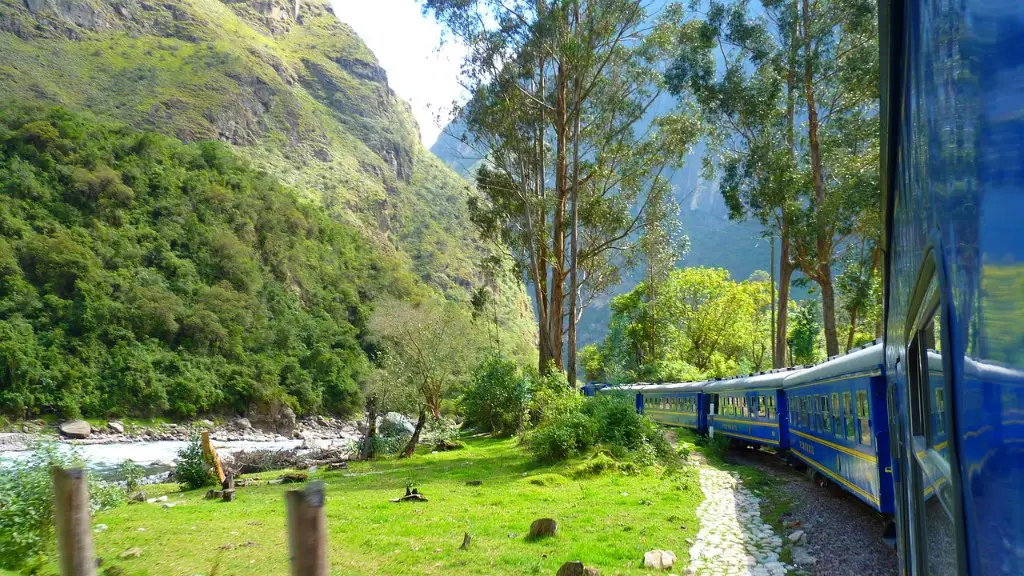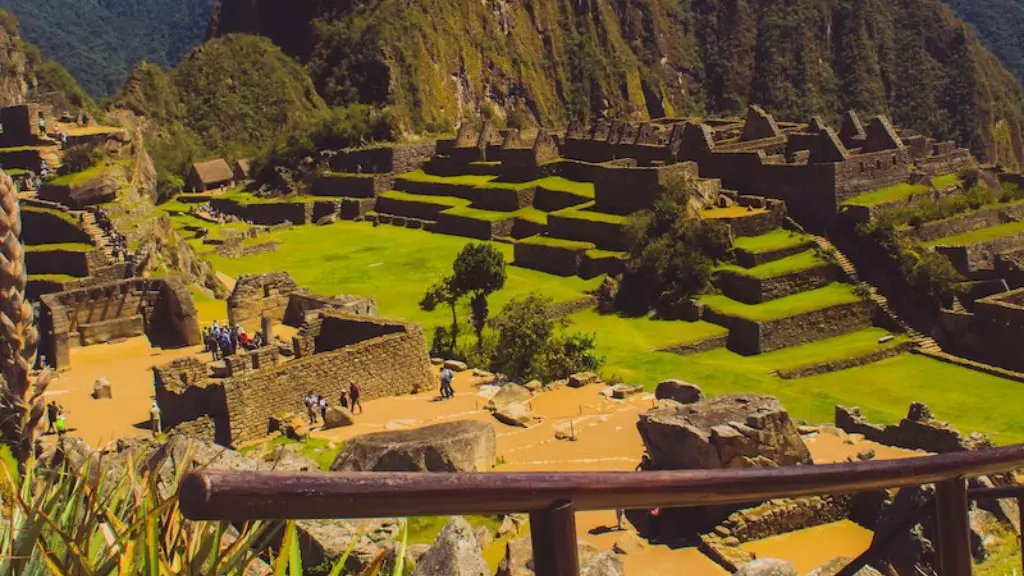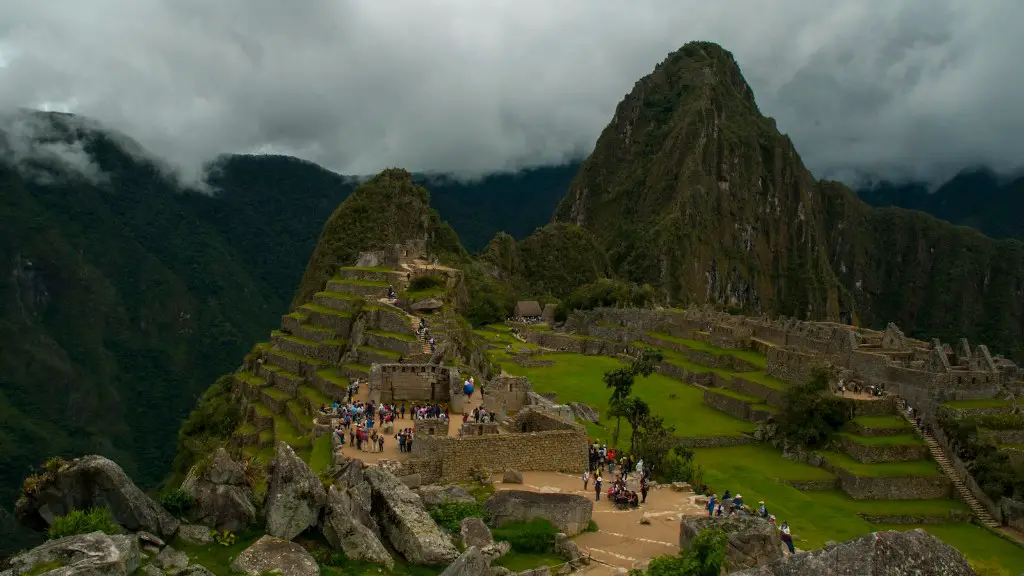Machu Picchu is a 15th-century Inca site located 2,430 metres (7,970 ft) above sea level. It is located in the Cusco Region, Urubamba Province, Machupicchu District in Peru. It is situated on a mountain ridge above the Sacred Valley which is 80 kilometres (50 mi) northwest of Cusco and through which the Urubamba River flows. Most archaeologists believe that Machu Picchu was built as an estate for the Inca emperor Pachacuti (1438–1472).
Machu Picchu is a 15th-century Inca citadel situated on a mountain ridge 2,430 metres (7,970 ft) above sea level. It is located in the Cusco Region, Urubamba Province, Machupicchu District in Peru. It was built in the classical Inca style, with polished dry-stone walls. Its three primary structures are the Inti Watana, the Temple of the Sun, and the Room of the Three Windows.
What is Machu Picchu famous for?
Machu Picchu is a symbol of the Incan Empire and one of the New Seven Wonders of the World. Built around 1450AD, it is more than 7,000 feet above sea level in the Andes Mountains and is the most visited tourist destination in Peru. It was designated a UNESCO World Heritage Site in 1983.
It is incredible to think that Machu Picchu was unknown to the outside world until 1911, and it is a testament to Hiram Bingham’s exploration that the site is now one of the most famous and well-preserved archaeological sites in the world. Bingham’s discovery of Machu Picchu was a true milestone in our understanding of the history and culture of the Inca people.
Who built Machu Picchu and why
Most recent archaeologists believe that Machu Picchu was constructed as an estate for the Inca emperor Pachacuti (1438–1472). The Incas built the estate around 1450 but abandoned it a century later, at the time of the Spanish conquest.
There is much debate surrounding the true purpose of Machu Picchu. Many modern-day archaeologists now believe that it served as a royal estate for Inca emperors and nobles. Others have theorized that it was a religious site, pointing to its proximity to mountains and other geographical features that the Incas held sacred. No one can say for certain what Machu Picchu was used for, but its intricate design and stunning location continue to fascinate people from all over the world.
Why is Machu Picchu a mystery?
There are many theories about who actually lived in Machu Picchu, but the most likely explanation is that it was a royal estate or retreat for Inca nobility. The fact that there is no mention of the site in Inca literature or folklore may be due to the fact that it was built after the fall of the Inca Empire.
Machu Picchu is a fascinating place and there are many interesting facts about it. Here are five interesting facts about Machu Picchu:
1. It’s deserving of recognition: Machu Picchu is one of the most iconic and recognisable archaeological sites in the world.
2. Its purpose remains debated: While there are many theories about what Machu Picchu was used for, its true purpose remains a mystery.
3. Its fine construction astounds: The site is incredibly well-preserved and the architecture is very impressive.
4. Its creation was laborious: It is thought that Machu Picchu was built by around 14,000 workers over a period of around 30 years.
5. It’s bigger than you may think: The site covers an area of around 32 square kilometers.
What are 10 facts about Machu Picchu?
Machu Picchu is a fascinating place with a rich history and many interesting facts. Here are 10 of the most fascinating facts about this amazing place:
1. The name is not Machu Picchu, and it can also not be called the “lost” city of the Incas
2. The construction is 75% original, one of the most well preserved archaeological sites of its time
3. Above Machu Picchu is a “no-fly” zone
4. It is located deep in the beautiful cloud Forest
5. Machu Picchu was built as a royal estate
6. It was never “discovered” by the Spanish, as they did not know it existed
7. The site was rediscovered in 1911 by Hiram Bingham
8. Machu Picchu is now a UNESCO World Heritage Site
9. Over 1 million people visit Machu Picchu every year
10. It is considered one of the Seven Wonders of the World
The Huayna Picchu is a mountain located in the Cusco Region of Peru. It is situated in the Machu Picchu Historical Sanctuary, and is known for its Inca ruins. The mountain peak is also known as the “Young Mountain” or “New Mountain”, due to its recent discovery.
What is Machu Picchu called now
It’s long been assumed that the Inca citadel known as Machu Picchu was built for the emperor Pachacuti. But new research suggests that it was actually constructed for his son, Tupac Inca Yupanqui.
The discrepancy arises from the fact that the site was never mentioned in Spanish records, which were the only reliable sources of information about the Inca Empire during the 16th century.
But a recently discovered document, known as the Códice Vergara, provides previously unknown details about the Inca royal family and their residence at Machu Picchu.
The Códice Vergara was written by an anonymous author in the early 1570s, and it includes a description of Machu Picchu that closely matches what we see today.
It’s now thought that the citadel was built around 1450, during the reign of Tupac Inca Yupanqui. And while it’s still possible that Pachacuti did visit the site, there’s no evidence that he ever lived there.
Machu Picchu is an amazing ancient city that was built around 1450 AD for the Incan emperor Pachacuti. The city is situated in modern day Peru and has been named as one of the Seven Wonders of the World. Hiram Bingham, a History professor, discovered the city in 1911. The city is truly a wonder to behold and is a must-see for anyone interested in history or ancient civilizations.
Who owns Machu Picchu?
After years of debate and negotiations, the disputed ownership of Machu Picchu has finally been resolved. The ancient Incan site now belongs to the Peruvian people, and everyone can enjoy its historical and archaeological significance. This is a great victory for the Peruvian people and will help to preserve this important part of their heritage for future generations.
Machu Picchu is a unique place in the world and is home to only llamas. The area has been protected since 1983 and is now a World Heritage Site. While no one is allowed to live inside the citadel, the llamas continue to thrive in this beautiful setting.
What is the secret of Machu Picchu
Machu Picchu was built to withstand earthquakes. The Incas designed the buildings in the city to be able to withstand the shaking that would occur from the earthquakes. This helped to keep the city safe and protect the people who lived there.
Machu Picchu is an ancient ruins located in the Andes mountains in Peru. The site is believed to have been built by the Inca people and was later abandoned. The site was rediscovered in 1911 by Hiram Bingham.
Why is Machu Picchu a spiritual place?
Machu Picchu is a famous Inca site in Peru. It is located in an energetic vortex, which makes it a spiritual place. Pachacutec, the Inca who built it, considered it a sacred place. It was later abandoned and rediscovered by Yale University explorer Hiram Bingham in 1911.
The ancient Inca believed that nature, man, and the Pachamama (Mother Earth) all lived in harmony and perpetual interrelation. The Inca state promoted the worship of a creator god (Wiracocha), the sun god (Inti), the Moon Goddess (Mamaquilla), the thunder god (Illapa), the earth monther (Pacha Mama), and a host of other supernaturals.
Warp Up
Machu Picchu is the site of an ancient Inca city located in present-day Peru. The city was built in the 15th century and was later abandoned.
Machu Picchu was built by the Incas in the 15th century and is located in Peru. It is one of the most well-known archaeological sites in the world.


